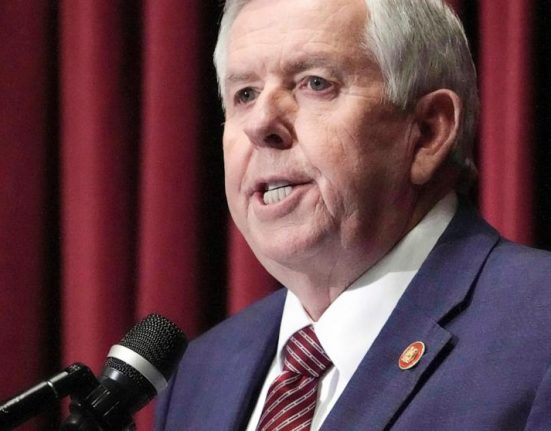Systemic gender inequalities exist despite global gains in human development indicators and economic opportunities. Unequal access to education, health services and legal rights, violence against women and cultural barriers result in unequal opportunities.
For instance, women’s labour force participation rate is 25% versus 58% for men and on average, they are paid 34% lower than men. Moreover, women are disadvantaged when it comes to digital and financial inclusion, access to social protection, land and housing. In fact, the gender gap has become worse after Covid and the World Economic Forum’s Global Gap Report 2023 notes that at current progress, it will take us 131 years to close the gender gap.
Affirmative action in resource allocation is key to correcting historical inequalities. Gender equality in the distribution of resources has a positive multiplier effect for a country’s socio-economic development goals and governments can play a catalytic role through their planning and budgeting decisions. Here, robust Public Finance Management (PFM) systems can ensure that government expenditure improves public service delivery, speeds up poverty reduction, promotes equal opportunities and achieves sustainable development goals.
With governments around the world spending one-third of GDP on public services, applying the gender lens to these spending decisions holds great potential for achieving better gender outcomes.
Women in leadership positions can further the agenda
IMF’s Gender Strategy 2022 notes that female leadership and diversity on boards of financial institutions are associated with greater financial stability. It also points out that female political leadership is associated with greater infrastructure spending and the educational attainment of girls. Research on Indian Panchayati Raj Institutions (PRIs) shows that female political leaders have a positive impact on female voter turnouts, health and education outcomes, and the aspirations of young girls to take up leadership roles.
Further, having more women in public administration makes the government more responsible and accountable to diverse public interests, improves the quality of services delivered, and instils trust amongst citizens towards it. Findings from the private sector corroborate that women at all levels of management showed up as better leaders, more consistently supporting employees and championing diversity, equity and inclusion. Hence, it is evident that women leaders not only promote other women and their needs but also make informed and equitable spending decisions.
However, women are under-represented in decision-making roles, particularly in the public finance domain. Globally, only 11% of countries have women leading the finance ministries. India is one of the few countries with a woman finance minister but women’s representation in public finance at other levels is inadequate.
Among states, only the Delhi government has a woman finance minister. Central Finance Commissions (CFC), which are instrumental in resource allocation between 3 tiers of government, do not have a favourable women representation. The recently commissioned 16th CFC has one female member out of 5 members. Only two of the previous six CFCs had women members, with only one-fifth representation.
According to a statistics ministry report, women account for only 22% of the total employees in the Indian government’s finance departments. Further, an assessment of employees in finance departments across states shows that women held only 27% of senior positions and only one state had a woman finance department head.
The low representation of women in finance and public finance, in particular, is in sharp contrast with the available talent pool. Globally, women represent about 30% of economics graduates and about 50% of business graduates (IMF 2018).
Evidently, there are barriers, independent of educational background, preventing women from joining the field of finance and advancing to top positions. The barriers range from systemic ones such as glass walls and glass ceilings, or lapses in the provision of an inclusive working environment, including childcare services, to barriers such as lack of access to patronage networks, and inadequate training and mentoring.
We cannot ignore women’s representation in politics since elected representatives are key stakeholders in budget formulation, approval and monitoring. Female politicians are known to represent the voices of other women and advocate for gender-responsive policies and resource allocation.
The Women Reservation Act, 2023 is a milestone in guaranteeing the representation of women in Lok Sabha and state legislative assemblies. But it is limited to one-third of all seats. One-third of seats in rural and urban local governments are also reserved for women. In fact, 10 states have increased women’s reservations to 50% in PRIs.
Even though equal representation needs to become the norm, we need to move from mere representation to leadership. Female political leaders need to be trained to better understand and influence budgeting decisions.
India, with a woman finance minister, has laid the pathway towards ensuring equal representation in the domain of PFM and raising aspirations of women to take up such roles. Increased assimilation of qualified women into PFM, having access to a peer network, mentoring and training opportunities, with a clear leadership trajectory, has the potential to stimulate systemic change while contributing to improved social and economic development outcomes.
While there is no quick fix to systemic gender inequalities, Gender Responsive Budgeting (GRB) can serve as an approach and method to close gender gaps in labour force participation, education, and health outcomes. India is among 100 countries to have initiated GRB to address gender equality, but its coverage is limited.
Gender equality considerations and related intersectionality are not adequately factored in during the design, implementation and financing of government planning. There is a need to mainstream gender in national development goals and strategies by integrating GRB across all programmes, schemes and departmental budgets across tiers of the government. And who better to lead this effort than women themselves.
Apula Singh is manager, Municipal Finance, Janaagraha Centre for Citizenship and Democracy. The views expressed are personal







